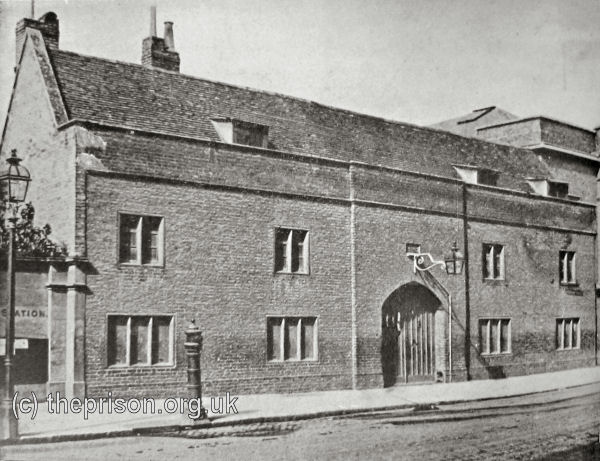Spinning House Bridewell, Cambridge, Cambridgeshire
In July 1628, Thomas Hobson, a local carrier, donated land to representatives of the town and University for the erection of a workhouse and a house of correction or bridewell, to be completed within a period of four years. The building, which became known as the Spinning House, was 'pleasantly situated near the fields at the south end of the parish of Great St Andrew's', on what became St Andrew's Street. It was located on the west side of the street, immediately south of the Baptists chapel. Part of the building was used to imprison vagrants and beggars who were employed in such tasks as beating hemp. Stocks of wool, flax and other materials were also kept on the premises for providing employment for unemployed textile workers who were not resident in the workhouse. However, the main use of the establishment became 'the confinement of such lewd women as the proctors apprehend in houses of ill fame; though sometimes the Corporation send small offenders thither, and the crier of the town is often there to discipline the ladies of pleasure with his whip.'

The Cambridge Spinning House.
© Peter Higginbotham.
In 1784, John Howard recorded:
In 1802, an article in the Gentleman's Magazine reported:
In 1838, a report by the Charity Commissioners recorded that "the Workhouse, which is commonly called by the name of the Spinning-house, is a large building in good repair, fit for the reception of about 60 persons." The also noted that prior to 1808:
Large sums of money were expended in 1812 and in 1821 in repairing and enlarging the buildings.
In the Victorian times, the establishment was used to detain local women suspected by University Proctors of having a corrupting influence on its male students. This ended in 1893 following the much publicised case of 17-year-old Daisy Hopkins, who had been arrested for the act of "walking with a member of the university". She sued the Proctors and lost in a trial that severely attacked her moral character but nevertheless prompted much public debate about the legitimacy of such arrests.
The building was demolished in 1901 and a new police station erected on the site. In 2022, the building was converted to the Hobson Hotel.
Records
Note: many repositories impose a closure period of up to 100 years for records identifying individuals. Before travelling a long distance, always check that the records you want to consult will be available.
- Cambridge Archives and Local Studies, Box SH 1009, Shire Hall, Castle Hill, Cambridge CB3 0AP.
- The National Archives, Kew, Richmond, Surrey, TW9 4DU. Has a wide variety of crime and prison records going back to the 1770s, including calendars of prisoners, prison registers and criminal registers.
- Find My Past has digitized many of the National Archives' prison records, including prisoner-of-war records, plus a variety of local records including Manchester, York and Plymouth. More information.
- Prison-related records on
Ancestry UK
include Prison Commission Records, 1770-1951
, and local records from London, Swansea, Gloucesterhire and West Yorkshire. More information.
- The Genealogist also has a number of National Archives' prison records. More information.
Census
Bibliography
- Higginbotham, Peter The Prison Cookbook: A History of the English Prison and its Food (2010, The History Press)
- Brodie, A. Behind Bars - The Hidden Architecture of England's Prisons (2000, English Heritage)
- Brodie, A., Croom, J. & Davies, J.O. English Prisons: An Architectural History (2002, English Heritage)
- Harding, C., Hines, B., Ireland, R., Rawlings, P. Imprisonment in England and Wales (1985, Croom Helm)
- McConville, Sean A History of English Prison Administration: Volume I 1750-1877 (1981, Routledge & Kegan Paul)
- Morris, N. and Rothman, D.G. (eds.) The Oxfod History of the Prison (1997, OUP)
- Pugh R.B. Imprisonment in Medieval England (1968, CUP)
Links
- Prison Oracle - resources those involved in present-day UK prisons.
- GOV.UK - UK Government's information on sentencing, probation and support for families.
Except where indicated, this page () © Peter Higginbotham. Contents may not be reproduced without permission.



